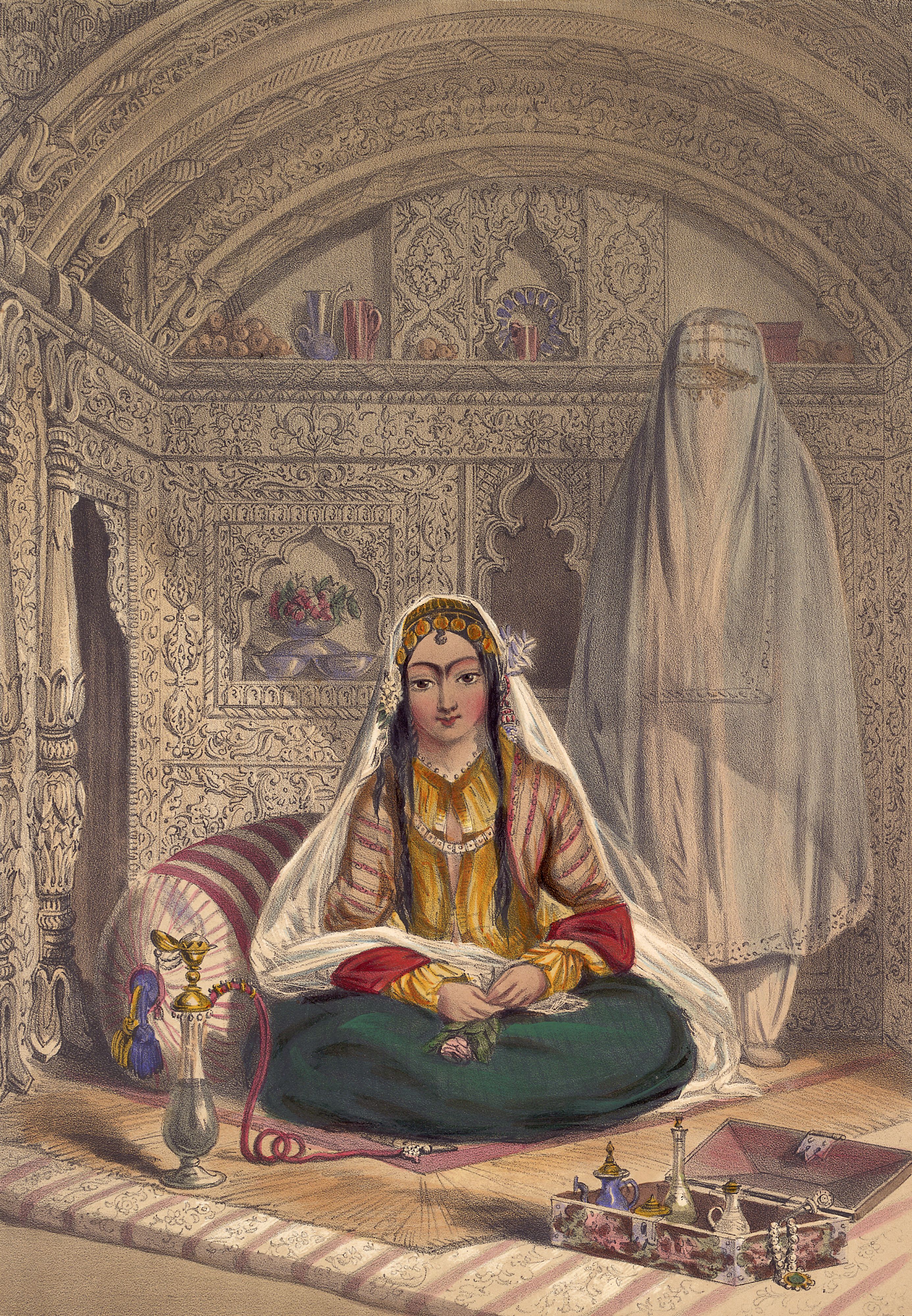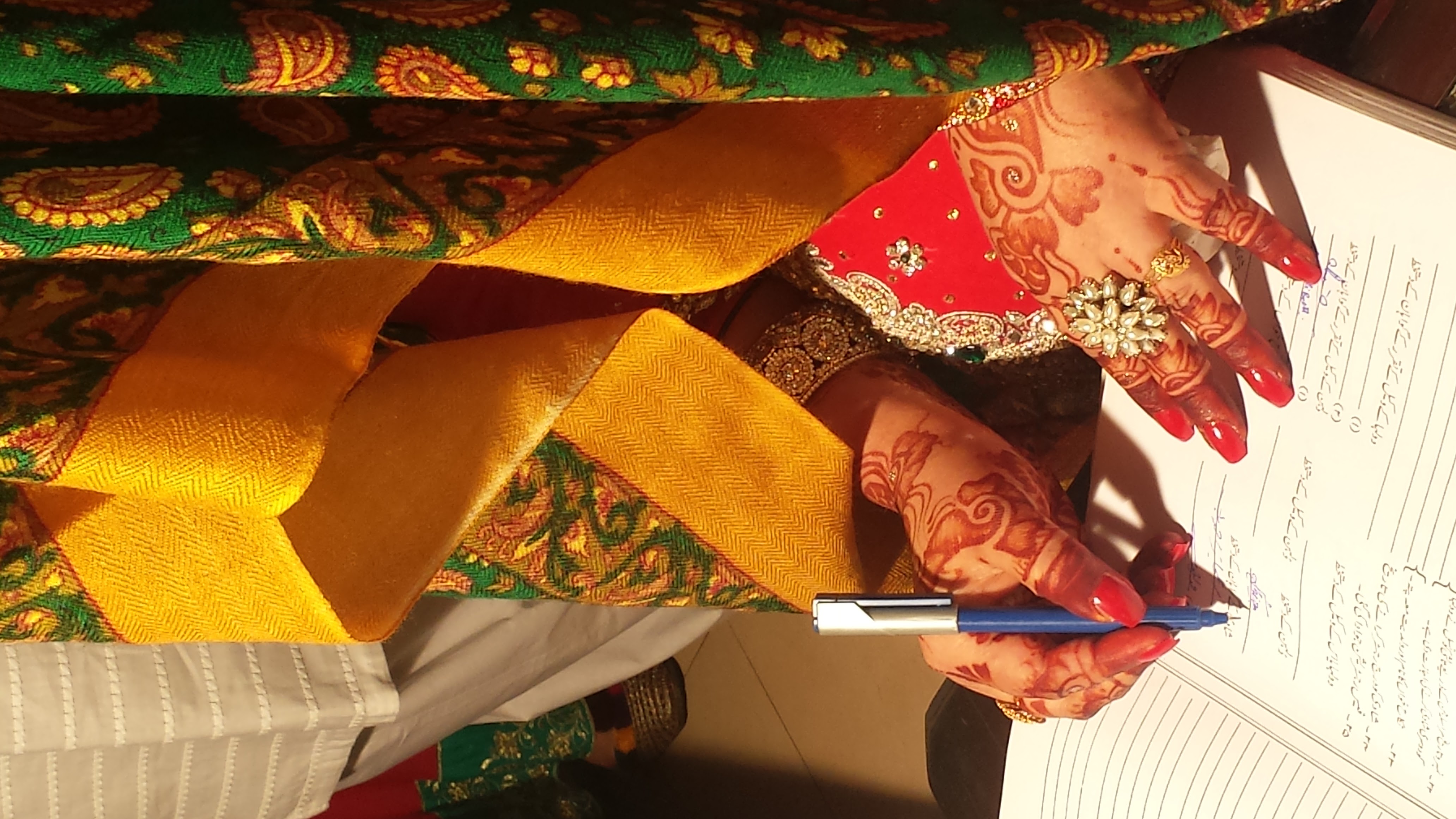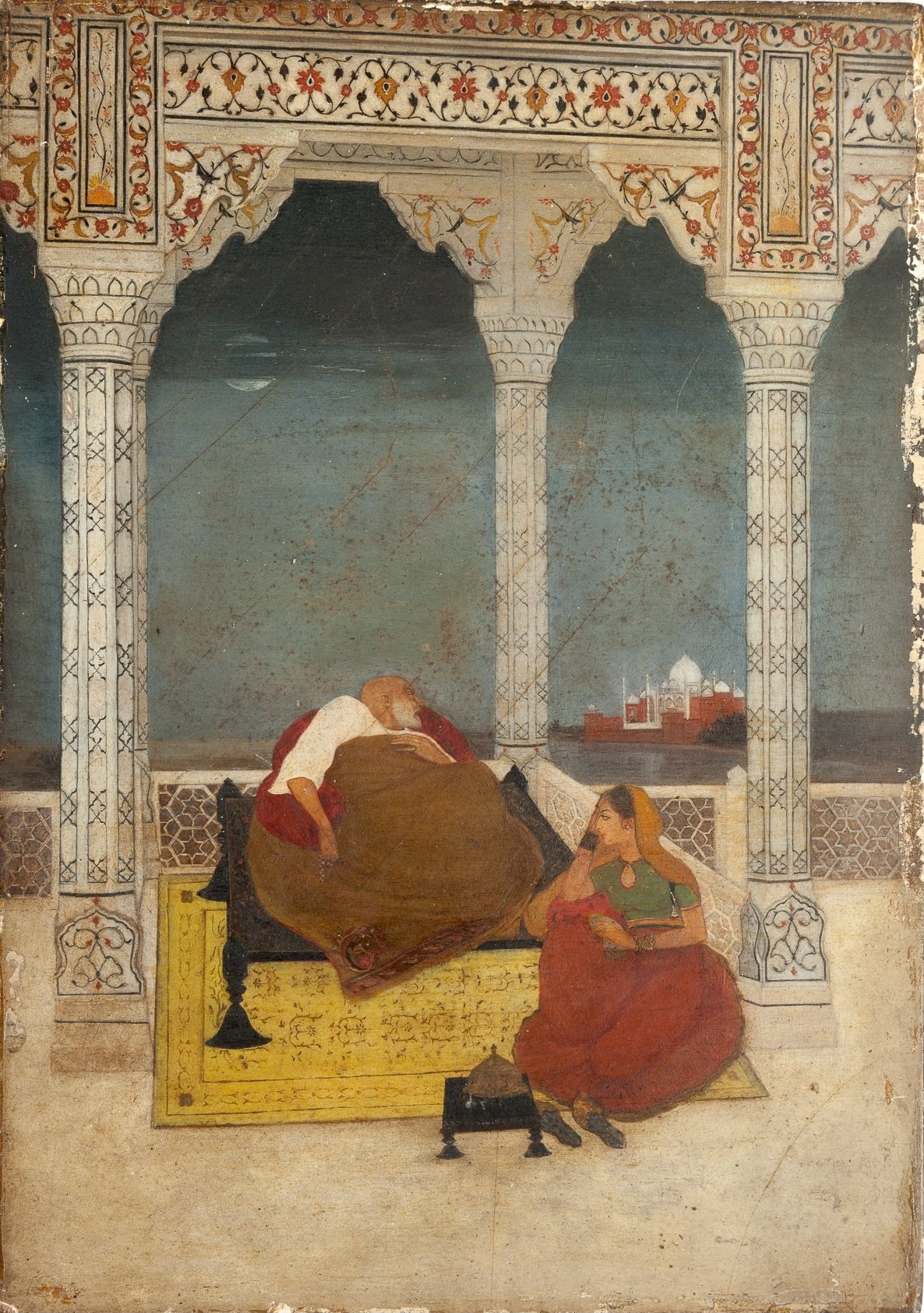|
Nadira Banu Begum
Nadira Banu Begum (14 March 1618 – 6 June 1659) was a Mughal princess and the wife of the Crown prince, Dara Shikoh, the eldest son and heir-apparent of the Mughal emperor Shah Jahan. After Aurangzeb's rise to power, Dara Shikoh's immediate family and supporters were in grave danger. Nadira died in 1659, a few months before her husband's execution, and was survived by two sons and a daughter. Family and lineage Nadira Banu Begum was born a Mughal princess and was the daughter of Sultan Parvez Mirza, the second son of Emperor Jahangir from his wife, Sahib-i-Jamal Begum. Her mother, Jahan Banu Begum, was also a Mughal princess, being the daughter of Sultan Murad Mirza, the second son of Emperor Akbar. Nadira was a half-cousin of her future husband, Dara Shikoh, as her father, Sultan Parvez Mirza, was the older half-brother of Dara's father, Shah Jahan. Marriage Dara Shikoh's mother, Empress Mumtaz Mahal died in 1631 while giving birth to her fourteenth child, Gauharara Begum. ... [...More Info...] [...Related Items...] OR: [Wikipedia] [Google] [Baidu] |
Princess
Princess is a regal rank and the feminine equivalent of prince (from Latin ''princeps'', meaning principal citizen). Most often, the term has been used for the consort of a prince, or for the daughter of a king or prince. Princess as a substantive title Some princesses are reigning monarchs of principalities. There have been fewer instances of reigning princesses than reigning princes, as most principalities excluded women from inheriting the throne. Examples of princesses regnant have included Constance of Antioch, princess regnant of Antioch in the 12th century. Since the President of France, an office for which women are eligible, is ''ex-officio'' a Co-Prince of Andorra, then Andorra could theoretically be jointly ruled by a princess. Princess as a courtesy title Descendants of monarchs For many centuries, the title "princess" was not regularly used for a monarch's daughter, who, in English, might simply be called "Lady". Old English had no female equivalent of "prince ... [...More Info...] [...Related Items...] OR: [Wikipedia] [Google] [Baidu] |
Heir-apparent
An heir apparent, often shortened to heir, is a person who is first in an order of succession and cannot be displaced from inheriting by the birth of another person; a person who is first in the order of succession but can be displaced by the birth of a more eligible heir is known as heir presumptive. Today these terms most commonly describe heirs to hereditary titles (e.g. titles of nobility) or offices, especially when only inheritable by a single person. Most monarchies refer to the heir apparent of their thrones with the descriptive term of ''crown prince'' or ''crown princess'', but they may also be accorded with a more specific substantive title: such as Prince of Orange in the Netherlands, Duke of Brabant in Belgium, Prince of Asturias in Spain (also granted to heirs presumptive), or the Prince of Wales in the United Kingdom; former titles include Dauphin in the Kingdom of France, and Tsesarevich in Imperial Russia. The term is also used metaphorically to indicate an e ... [...More Info...] [...Related Items...] OR: [Wikipedia] [Google] [Baidu] |
Harem
Harem (Persian: حرمسرا ''haramsarā'', ar, حَرِيمٌ ''ḥarīm'', "a sacred inviolable place; harem; female members of the family") refers to domestic spaces that are reserved for the women of the house in a Muslim family. A harem may house a man's wife or wives, their pre-pubescent male children, unmarried daughters, female domestic servants, and other unmarried female relatives. In harems of the past, slave concubines were also housed in the harem. In former times some harems were guarded by eunuchs who were allowed inside. The structure of the harem and the extent of monogamy or polygamy has varied depending on the family's personalities, socio-economic status, and local customs. Similar institutions have been common in other Mediterranean and Middle Eastern civilizations, especially among royal and upper-class families, and the term is sometimes used in other contexts. In traditional Persian residential architecture the women's quarters were known as ''andar ... [...More Info...] [...Related Items...] OR: [Wikipedia] [Google] [Baidu] |
Nikah
In Islam, nikah is a contract between two people. Both the groom and the bride are to consent to the marriage of their own free wills. A formal, binding contract – verbal or on paper – is considered integral to a religiously valid Islamic marriage, and outlines the rights and responsibilities of the groom and bride. Divorce in Islam can take a variety of forms, some executed by a husband personally and some executed by a religious court on behalf of a plaintiff wife who is successful in her legal divorce petition for valid cause. In addition to the usual marriage until death or divorce, there is a different fixed-term marriage known as ("temporary marriage") permitted only by the Twelver branch of Shi'ite for a pre-fixed period.Berg, H"Method and theory in the study of Islamic origins" Brill 2003 , 9789004126022. Accessed at Google Books 15 March 2014.Hughes, T"A Dictionary of Islam." Asian Educational Services 1 December 1995. Accessed 15 April 2014.Pohl, F"Muslim worl ... [...More Info...] [...Related Items...] OR: [Wikipedia] [Google] [Baidu] |
Agra
Agra (, ) is a city on the banks of the Yamuna river in the Indian state of Uttar Pradesh, about south-east of the national capital New Delhi and 330 km west of the state capital Lucknow. With a population of roughly 1.6 million, Agra is the fourth-most populous city in Uttar Pradesh and List of cities in India by population, twenty-third most populous city in India. Agra's notable historical period began during Sikandar Lodi's reign, but the golden age of the city began with the Mughals. Agra was the foremost city of the Indian subcontinent and the capital of the Mughal Empire under Mughal emperors Babur, Humayun, Akbar, Jahangir and Shah Jahan. Under Mughal rule, Agra became a centre for learning, arts, commerce, and religion, and saw the construction of the Agra Fort, Sikandra, Agra, Sikandra and Agra's most prized monument, the Taj Mahal, built by Shah Jahan as a mausoleum for his favourite empress. With the decline of the Mughal empire in the late 18th century, the ci ... [...More Info...] [...Related Items...] OR: [Wikipedia] [Google] [Baidu] |
Jahanara Begum
Jahanara Begum (23 March 1614 – 16 September 1681) was a Mughal princess and later the Padshah Begum of the Mughal Empire from 1631 to 1658 and again from 1668 until her death. She was the second and the eldest surviving child of Emperor Shah Jahan and Mumtaz Mahal. After Mumtaz Mahal's untimely death in 1631, the 17-year-old Jahanara was entrusted with the charge of the royal seal and conferred the title of ''Padshah Begum'' (First lady) of the Mughal Empire, despite the fact that her father had three surviving wives. She was Shah Jahan's favourite daughter, wielded major political influence during her father's reign, and has been described as "the most powerful woman in the empire" at the time. Jahanara was an ardent partisan of her brother, Dara Shikoh, and supported him as her father's chosen successor. During the war of succession which took place after Shah Jahan's illness in 1657, Jahanara sided with the heir-apparent Dara and ultimately joined her father in Agra Fort ... [...More Info...] [...Related Items...] OR: [Wikipedia] [Google] [Baidu] |
Gauharara Begum
Gauhar Ara Begum (; 17 June 1631 – 1706) was a Mughal Empire, Mughal princess and the fourteenth and youngest child of the Mughal emperor Shah Jahan and his wife Mumtaz Mahal. Her mother died giving birth to her in 1631. Gauhar Ara, however, survived the childbirth and lived for another three quarters of a century. Little is known about her and whether she was involved in the Aurangzeb#War of Succession, war of succession for her father's throne. Gauhar Ara died in 1706, aged about 75. Life Born on 17 June 1631, the day her mother Mumtaz Mahal died, Gauhar Ara Begum appears to have kept a fairly low profile throughout the reigns of her father and brother. Evidence vaguely indicates that she may have supported her fourth brother Murad Bakhsh, Murad Bakhsh's bid for the throne during the War of Succession. Were this to be true, this role was unlikely to have been particularly active since, unlike her father and sister Jahanara Begum, Jahanara, she was not imprisoned afterwar ... [...More Info...] [...Related Items...] OR: [Wikipedia] [Google] [Baidu] |
Mumtaz Mahal
Mumtaz Mahal (/'/; ), born Arjumand Banu Begum (27 April 1593 – 17 June 1631) was the empress consort of the Mughal Empire from 19 January 1628 to 17 June 1631 as the chief consort of the Mughal emperor Shah Jahan. The Taj Mahal in Agra, often cited as one of the Wonders of the World, was commissioned by her husband to act as her tomb. Mumtaz Mahal was born Arjumand Banu Begum in Agra to a family of Persian nobility. She was the daughter of Abu'l-Hasan Asaf Khan, a wealthy Persian noble who held high office in the Mughal Empire, and the niece of Empress Nur Jahan, the chief wife of Emperor Jahangir and the power behind the emperor. She was married at the age of 19 on 10 May 1612 or 16 June 1612 to Prince Khurram, later known by his regnal name Shah Jahan, who conferred upon her the title "Mumtaz Mahal" (Persian: the exalted one of the palace). Although betrothed to Shah Jahan since 1607, she ultimately became his second wife in 1612. Mumtaz and her husband had 14 children, in ... [...More Info...] [...Related Items...] OR: [Wikipedia] [Google] [Baidu] |
Brooklyn Museum - The Nuptials Of Dara Shikoh
Brooklyn () is a borough of New York City, coextensive with Kings County, in the U.S. state of New York. Kings County is the most populous county in the State of New York, and the second-most densely populated county in the United States, behind New York County ( Manhattan). Brooklyn is also New York City's most populous borough,2010 Gazetteer for New York State United States Census Bureau. Retrieved September 18, 2016. with 2,736,074 residents in 2020. Named after the Dutch village of , Brooklyn is located on ... [...More Info...] [...Related Items...] OR: [Wikipedia] [Google] [Baidu] |






